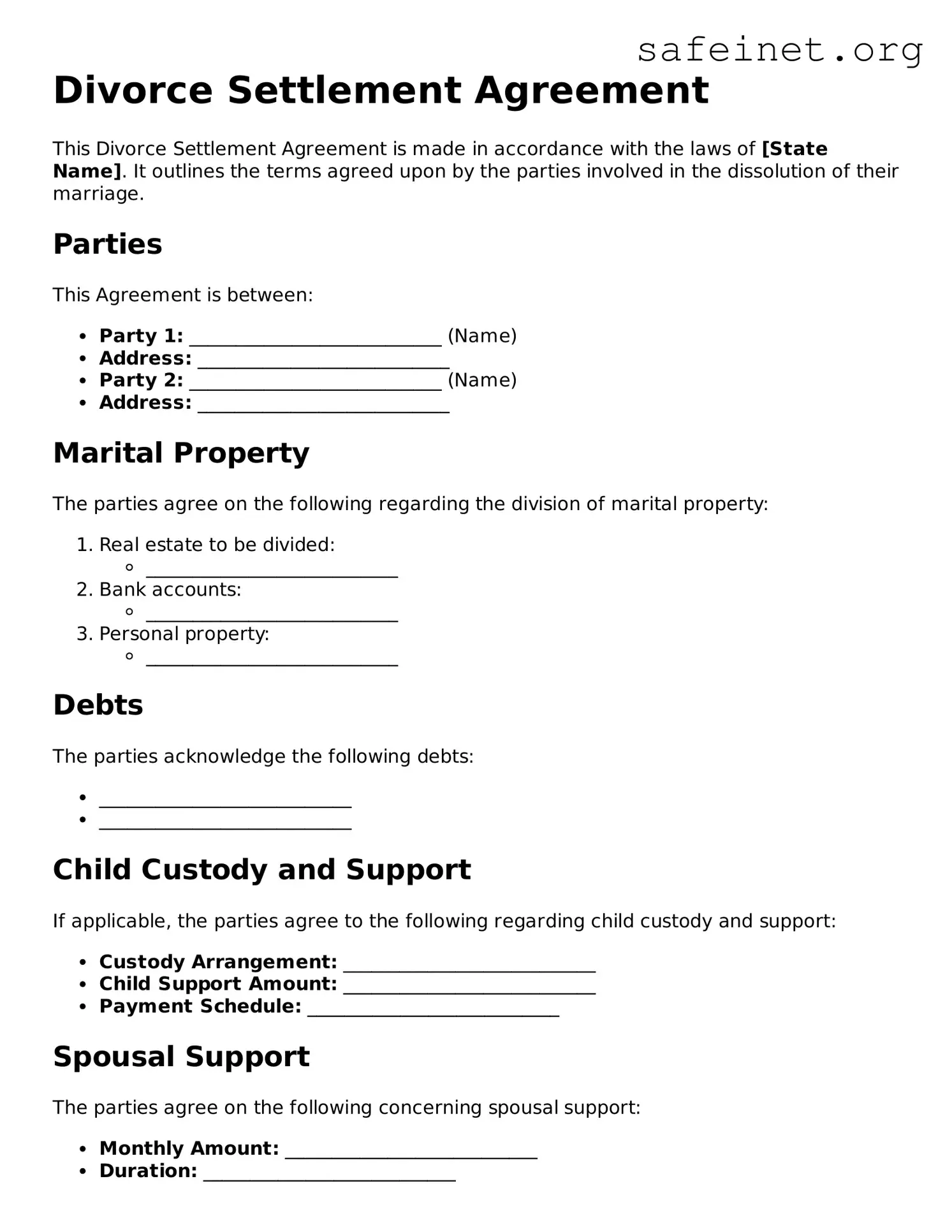Divorce Settlement Agreement
This Divorce Settlement Agreement is made in accordance with the laws of [State Name]. It outlines the terms agreed upon by the parties involved in the dissolution of their marriage.
Parties
This Agreement is between:
- Party 1: ___________________________ (Name)
- Address: ___________________________
- Party 2: ___________________________ (Name)
- Address: ___________________________
Marital Property
The parties agree on the following regarding the division of marital property:
- Real estate to be divided:
- ___________________________
- Bank accounts:
- ___________________________
- Personal property:
- ___________________________
Debts
The parties acknowledge the following debts:
- ___________________________
- ___________________________
Child Custody and Support
If applicable, the parties agree to the following regarding child custody and support:
- Custody Arrangement: ___________________________
- Child Support Amount: ___________________________
- Payment Schedule: ___________________________
Spousal Support
The parties agree on the following concerning spousal support:
- Monthly Amount: ___________________________
- Duration: ___________________________
Final Agreement
The parties acknowledge that this Agreement is binding and will be submitted to the court for approval. It represents the complete understanding of both parties.
Signatures
By signing below, both parties agree to adhere to the terms laid out in this Divorce Settlement Agreement.
- Party 1 Signature: ___________________________ Date: ________________
- Party 2 Signature: ___________________________ Date: ________________
